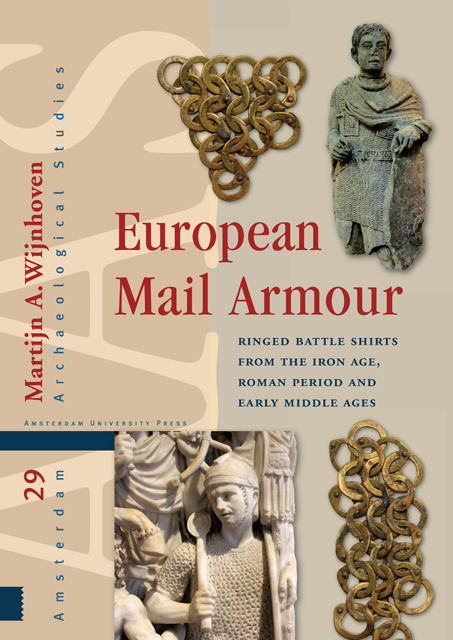Book contents
- Frontmatter
- Contents
- Acknowledgements
- Dedication
- 1 Introduction
- 2 The origins of mail armour
- 3 Distribution and archaeological context
- 4 The iconography of early mail armour
- 5 The naming of mail armour
- 6 Decoration in mail garments
- 7 Padded garments
- 8 The craft of making mail rings
- 9 Weaving patterns
- 10 The construction of mail garments
- 11 Ring characteristics
- 12 Final considerations
- Bibliography
- Database
- Appendix 1 Catalogue of mail armour
- Appendix 2 Catalogue of hybrid armour
- Appendix 3 Catalogue of isolated finds of fasteners and fixtures
- Appendix 4 Finds excluded from the database
5 - The naming of mail armour
Published online by Cambridge University Press: 24 November 2022
- Frontmatter
- Contents
- Acknowledgements
- Dedication
- 1 Introduction
- 2 The origins of mail armour
- 3 Distribution and archaeological context
- 4 The iconography of early mail armour
- 5 The naming of mail armour
- 6 Decoration in mail garments
- 7 Padded garments
- 8 The craft of making mail rings
- 9 Weaving patterns
- 10 The construction of mail garments
- 11 Ring characteristics
- 12 Final considerations
- Bibliography
- Database
- Appendix 1 Catalogue of mail armour
- Appendix 2 Catalogue of hybrid armour
- Appendix 3 Catalogue of isolated finds of fasteners and fixtures
- Appendix 4 Finds excluded from the database
Summary
‘The dewy earth produced me from its frozen inwards. I am not made from the bristling fleece of [sheep’s] wool; no yarn is drawn [tight on the loom], no humming threads leap about [the spindle]; nor do Chinese silk-worms weave me from their yellow floss; I am not gathered from spinning wheels, nor am I beaten by the stiff carding comb; and yet, nevertheless, note that I am called ‘clothing’ in common parlance. I have no fear of arrows drawn from long quivers.’
7th century Anglo-Latin riddle for the word loricaMany works on the weapons of the Roman army will attest that the segmented cuirass of the heavy infantry is called lorica segmentata, scale armour is known as lorica squamata, and the correct term for mail is lorica hamata. All three terms are well-accepted and can be considered common knowledge in scholarly and popular publications. While many do indicate that lorica segmentata is a modern Latinised term without an ancient counterpart, it is usually taken for a fact that the Romans referred to a coat of mail as a lorica hamata. However, when we look in more detail at the available evidence, the term loses much of its assumed infallibility. One may even say that establishing the Roman term for mail is like stepping on quicksand, seemingly safe on the surface, but shaky and treacherous deep down.
CLASSICAL LITERATURE ON ARMOUR
While many classical sources make mention of armour, often using the word thoraca (cuirass) or lorica (armour), they usually do so only in a general sense. The great majority of the written sources does not specify the type of armour that was involved, what it looked like or was constructed. For example, although historical works often involve narrations of conflict, it is the description of events and not of objects that gets the emphasis. For the narrative it is simply not necessary to go into the elaborate description of objects such as armour. Moreover, what armour looked like was probably self-evident to most readers and did not need to be explained in the texts.
- Type
- Chapter
- Information
- European Mail ArmourRinged Battle Shirts from the Iron Age, Roman Period and Early Middle Ages, pp. 133 - 142Publisher: Amsterdam University PressPrint publication year: 2021



